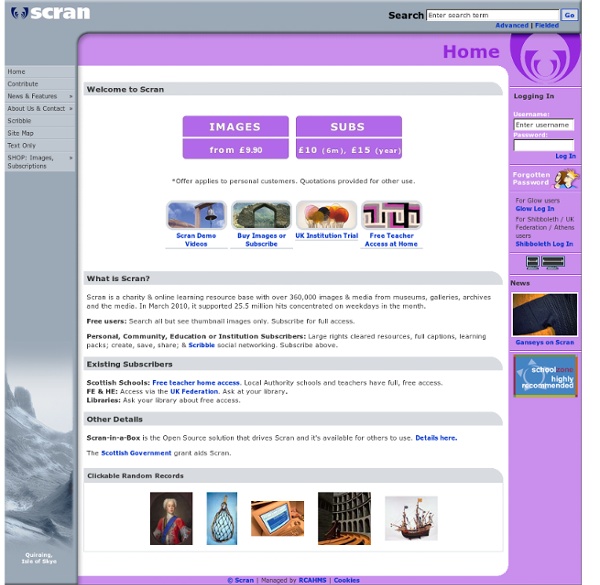



The Godfrey Edition: Ordnance Survey Maps History of Scotland | Scottish History The history of Scotland is fascinating and complex; there are Roman soldiers, Vikings, noble clansmen, powerful ruling monarchs and even enlightened philosophers. Scotland has experienced extraordinary growth and change during the course of its lifetime - it’s a place that has been invaded and settled many times and that has made mighty contributions to culture and society. Explore thousands of years of people and events with our timeline that highlights some of the most significant moments in Scotland’s fascinating history. The birth of Scotland The Palaeolithic Era The period of earliest known occupation of Scotland by man is from the Palaeolithic era – also known as the Stone Age. Neolithic Age The earliest prehistoric tools found still surviving in Scotland date from 3000 BC – during the Neolithic age Scotland was home to nomadic hunter-gatherers as well as the first farmers who built permanent dwellings. The Roman Empire Fighting for independence Battle of Stirling Bridge The Act of Union
Who's Who We use cookies to enhance your experience on our website. By clicking 'continue' or by continuing to use our website, you are agreeing to our use of cookies. You can change your cookie settings at any time. © Oxford University Press All Rights Reserved Text of Who's Who and Who Was Who copyright © A & C Black, an imprint of Bloomsbury Publishing plc All other web site content copyright © 2014 Oxford University Press privacy policy and legal notice | site credits Show related links Archives Hub Scottish Art − Collection The National Galleries of Scotland holds the national collection of Scottish art, the most important of its kind in the world. Displays from this are shown across our galleries in Edinburgh, giving a picture of the country’s art from the turn of the sixteenth century to the present day. We work with other museums and galleries locally and internationally to promote the enjoyment of Scottish art as widely as possible and, with the aid of our libraries and archives, actively contribute to and encourage the study of Scottish art. Within our galleries, changing selections from the Scottish collections are shown within a wider international context. We also organise a regular programme of special exhibitions and displays focussing on particular Scottish artists or themes. We have used a broad definition of Scottish art that embraces art and artists with a whole range of differing associations with this country – from the artist’s nationality to the subject matter of the artwork.
EnglishOrigins.org Scottish Art, Scottish Paintings, Scottish Artists and Contemporary Art Lookup UK facebook About this page Our systems have detected unusual traffic from your computer network. This page checks to see if it's really you sending the requests, and not a robot. Why did this happen? This page appears when Google automatically detects requests coming from your computer network which appear to be in violation of the Terms of Service. This traffic may have been sent by malicious software, a browser plug-in, or a script that sends automated requests. Sometimes you may be asked to solve the CAPTCHA if you are using advanced terms that robots are known to use, or sending requests very quickly.
Local BMD Project Over the last few years family historians in a growing number of counties and regions within the country have been working with their local Register Office staff to create on-line indexes. Each has been managed separately and an indication of the success of the project can be seen by the fact that there are now over 40 million records on-line under the Local BMD banner. The aim now is to encourage family historians in the rest of the country to join this project and begin working with their local register offices to put original birth, marriage and death indexes on-line. The start of UKBMD website and the Local BMD Project. In 1837 registration of births, marriages and deaths in England and Wales began, however this did not become compulsory until 1875 with the Births and Deaths Registration Act. Since 2000 a growing number of Family History Societies have been working with their local Register Offices to place indexes to births, marriages and deaths on-line. Can you volunteer to help?